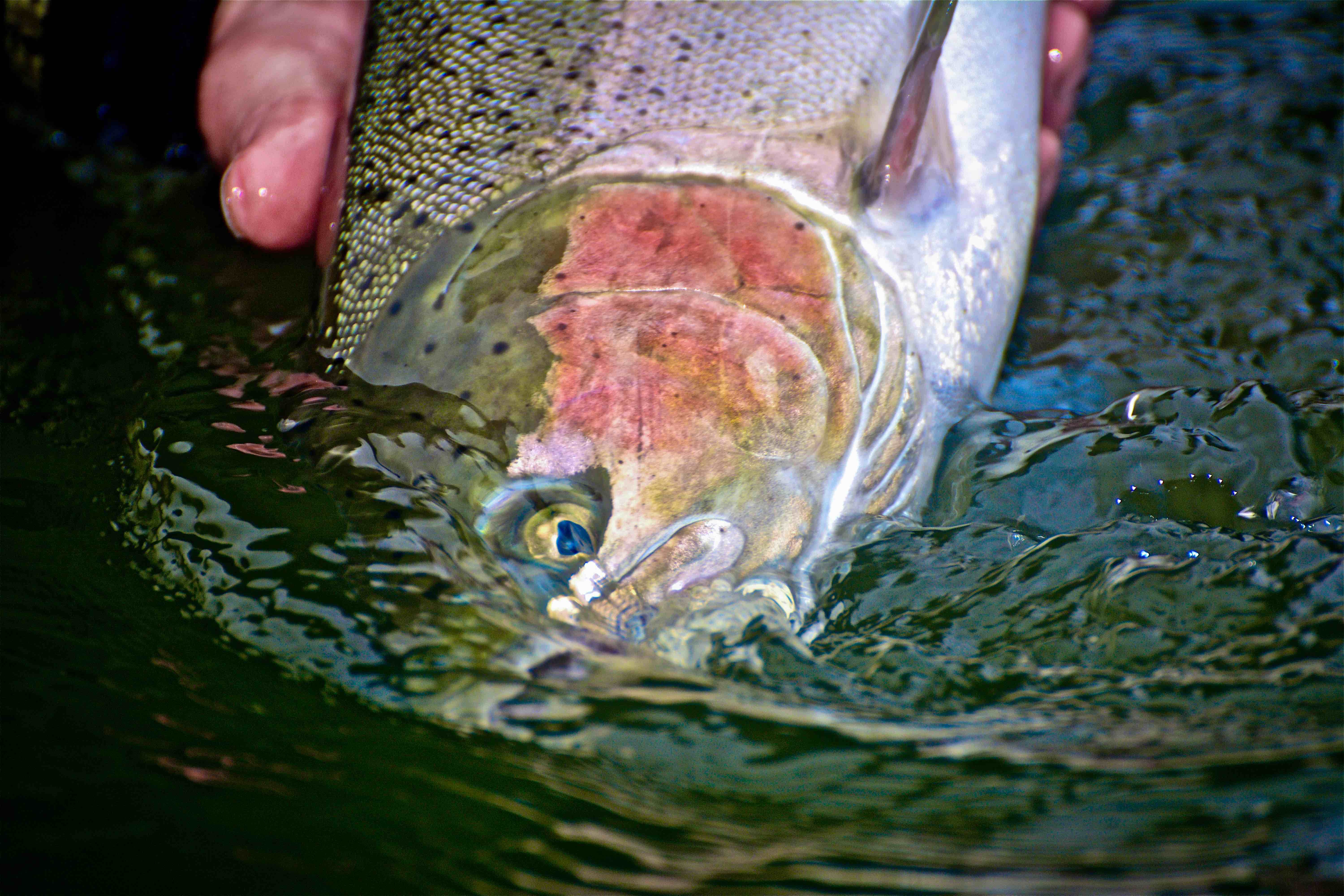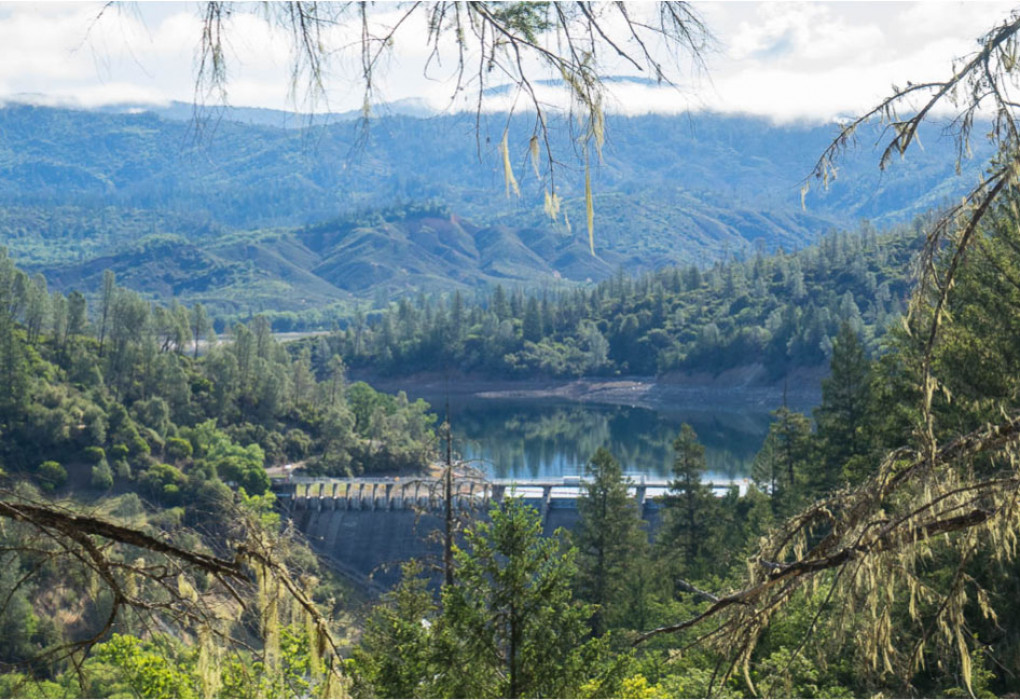Action Alert: Restore access for wild salmon and steelhead to the cool headwaters of the Eel River!
Help restore access for wild salmon and steelhead to the cool headwaters of the Eel River!
California’s Eel River represents one of the greatest opportunities to recover wild Chinook salmon and steelhead in the Pacific Northwest, and right now your voice is needed to help get wild salmon and steelhead volitional access to critical headwater habitat currently blocked by the 100+ year-old Scott Dam.
In 2015 and 2016, two of the warmest years on record, Native Fish Society River Stewards, staff and volunteers have gone into the remote and rugged headwaters of the Eel River above Scott Dam to collect temperature data from June - October. Our results have demonstrated that during the warm summer months, while the majority of the mainstem Eel River is at temperatures considered lethal to salmonids, this upstream habitat supports cool water that is important to the long-term survival to the river's wild salmon and steelhead. An estimated 250 miles of habitat is available to steelhead, and over 100 miles of habitat is available to Chinook salmon above Scott Dam. Read more about these efforts on our Eel River Headwaters Campaign Page.
Right now, until August 4th, 2017 the Federal Energy Regulatory Commission (FERC) is accepting comments to evaluate Pacific Gas & Electric’s license renewal application for the three-part Potter Valley Project, which includes Scott Dam, Cape Horn Dam, and a water diversion tunnel to the Russian River.
Unfortunately, the scoping document failed to include any options for fish passage or for decommissioning Scott Dam that would provide threatened salmon and steelhead volitional access into this critical upstream cold-water habitat. In the Multi-species Recovery Plan for these Chinook salmon and steelhead populations NOAA-Fisheries specifically stated that restoring access for these species to the habitat upstream of Scott Dam is essential to their recovery.
We need your help to join us in telling FERC that restoring volitional access for wild salmon and steelhead to the headwaters of the Eel River is critical to their long-term survival. Without this access to the cool, headwater habitat above Scott Dam, the Potter Valley Project will likely jeopardize their survival given temperature projections in an increasingly warming climate.
I recognize that it can be difficult to provide comments on the FERC relicensing. It is onerous by design to limit public participation on these controversial topics but it especially important that we let FERC know that this is an incredible opportunity for us to help recover wild salmon and steelhead in an important California watershed. Providing access is one critical step in helping reversing the largest physical obstacle remaining in the watershed that has contributed to the dramatic decline in the Eel River's wild fish populations. Please add your voice to the public comments by following the steps below, and call us if you have any questions on how to make your voice heard at 503.344.4218.
1. To provide comments visit the FERC eComment webpage.
2. Click on the eComment File button (see below), which will take you to a page to create an account.
3. Create a personal account that allows you to comment, this will send you a verification email that enables you to submit a comment on the Potter Valley Project (Docket: #P-77-285)
4. Shortly after you will receive an email that provides you with a link on where to provide comments.
5. Lastly, enter docket P-77-285 and add your comments to the section below.
Comments can also be printed and mailed to:
Kimberly Bose, Secretary
Federal Energy Regulatory Commission
888 First Street, NE
Washington, DC 20426
RE: Docket # P-77-285
Talking Points on the Relicensing of Potter Valley Project Scoping Document
Given the current imperiled status of the upper Eel River’s salmon and steelhead, and projected future changes in air and water temperatures resulting from climate change, FERC must evaluate alternatives that include opportunities to restore volitional upstream and downstream access to threatened salmonids to the critical cold water sources above Scott Dam and the Potter Valley Project.
- Scott Dam blocks access for up to 100 miles of upstream, suitable habitat for federally listed as threatened Chinook salmon (VTN, 1982; USFS and BLM, 1995; NMFS, 2016).
- The NOAA-Fisheries Multi-species Recovery Plan states, “During the upcoming PVP FERC relicensing process, all options to increase Chinook salmon habitat availability above Scott Dam should be thoroughly investigated." - Yet this option was not included in the scoping documents.
- Scott Dam blocks access to over 200 miles of upstream, suitable habitat for federally listed as threatened steelhead trout (VTN, 1982; Spence et al., 2012; NMFS, 2016).
- NOAA-Fisheries Multi-species Recovery Plan states, “Virtually all steelhead habitat within the Upper Mainstem Eel River steelhead population exists above Scott Dam”. Furthermore, “The Upper Mainstem Eel River steelhead population was once the longest-migrating population in the entire DPS. Restoring access to historical habitat above Scott Dam is essential to recovering this population” (NOAA-Fisheries Multi-species Recovery Plan).
- The headwaters of the upper Eel River above Scott Dam maintain year-round cold water that are critical to all life stages of cold-water species, such as Chinook salmon and Steelhead/rainbow trout.
- Any cold, clean source of water accessible, or potentially accessible, to salmonids could be of great benefit to the recovery of threatened and sensitive populations and may be critical to their long-term survival as they search for cold water refugia given climate change projections over the next fifty to eighty years.
- Without access to these cold-water sources, the Eel River’s threatened fish populations could be jeopardized by the operation of Project No. 77- Potter Valley Project.
Thank you for taking the time to comment on this important opportunity. This can seem like an arduous process, but your voice is important and is essential to helping get wild salmon and steelhead to this critical habitat.
Support wild fish and increase your wild fish mojo!

Photo: Marty Sheppard
Additional Information and Resources:
- Coastal Multispecies Final Recovery Plan: California Coastal Chinook Salmon ESU, Northern California Steelhead DPS and Central California Coast Steelhead DPS
- Native Fish Society 2015 Temperature Monitoring Report
- Pacific Gas & Electric - Project Overview for Potter Valley Project #77
- PG&E Pre-Application Document for Potter Valley Project



